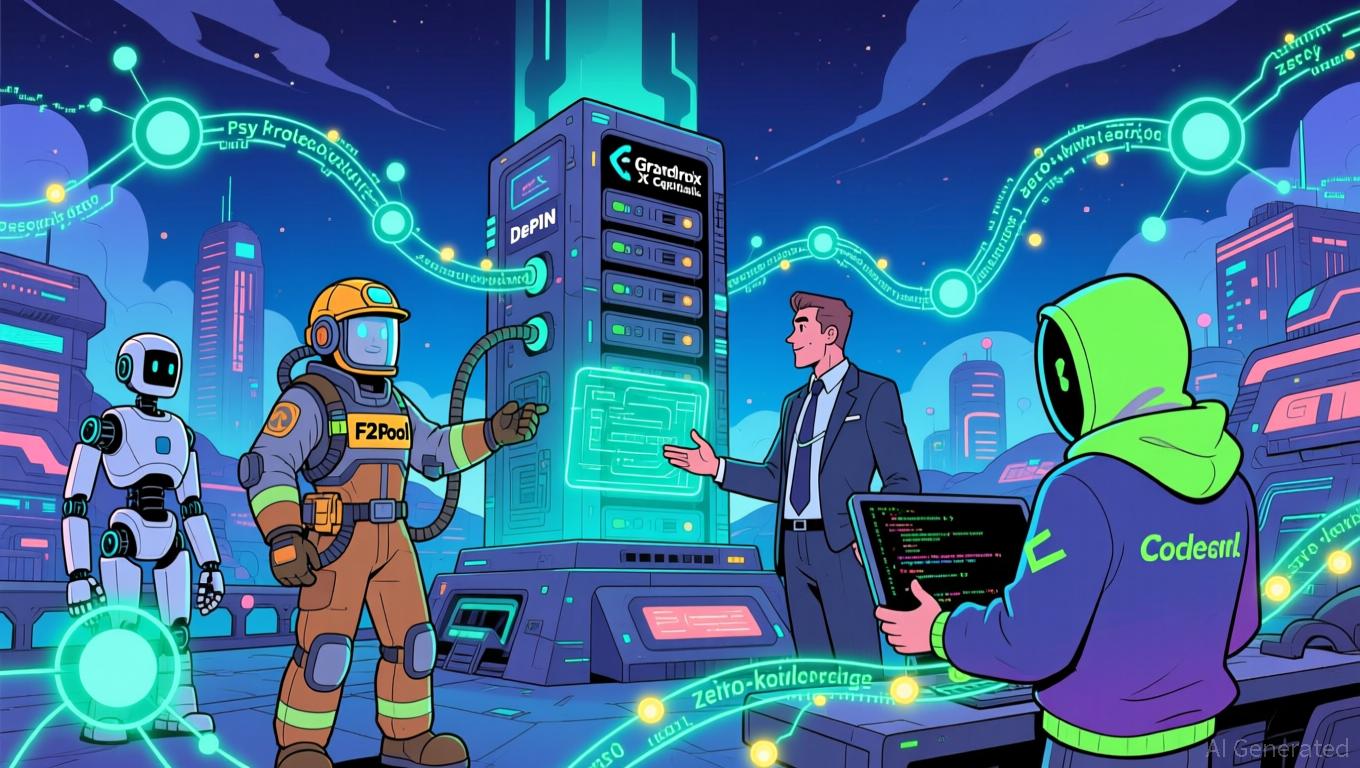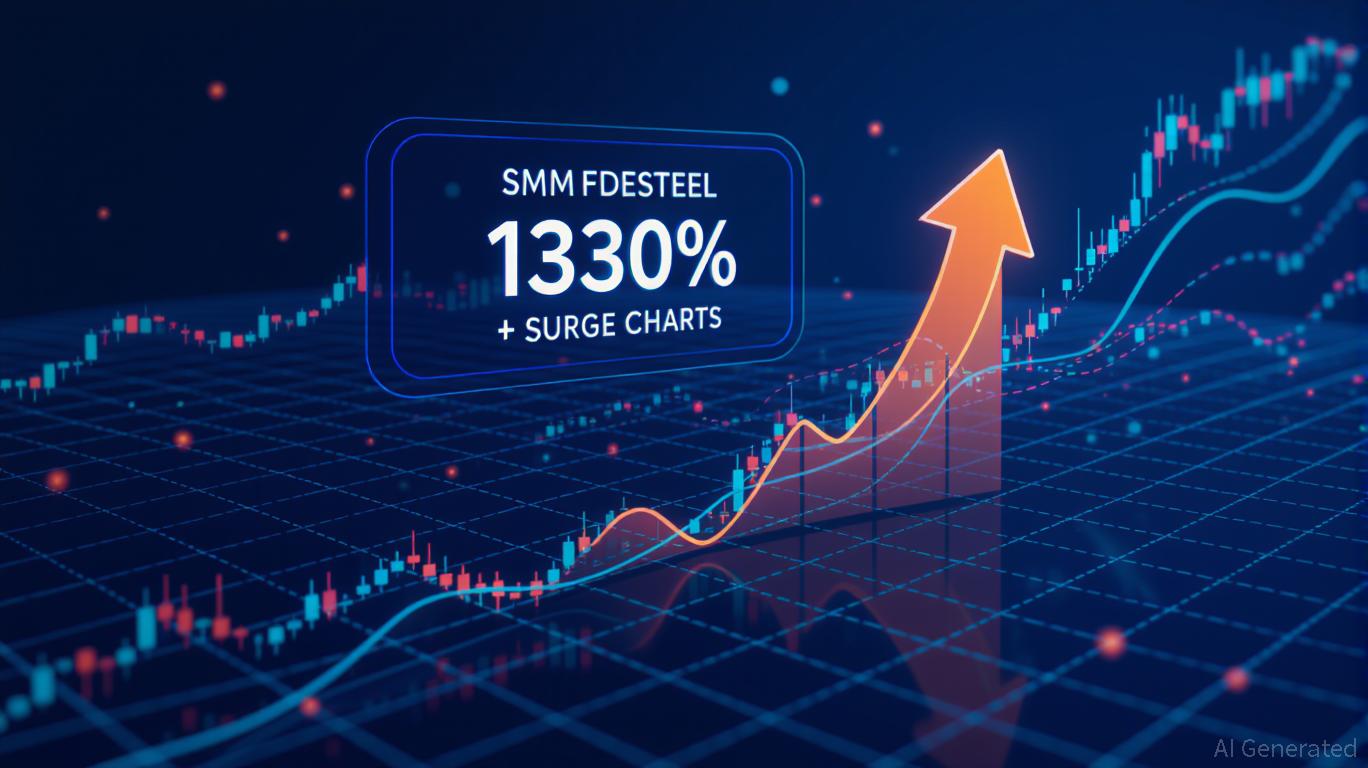Fed Split Over December Decision: Focus on Employment or Tackle Rising Prices?
- Fed officials debate December rate cut likelihood (67.3%), balancing labor market risks vs. inflation amid divided policy views. - Governor Cook prioritizes employment risks over inflation, while Daly supports "modestly restrictive" policy to curb price pressures. - Goolsbee warns of rising inflation, contrasting with Myron's call for 50-basis-point cuts to prevent recession, highlighting policy uncertainty. - Fed's $125B liquidity injections and balance-sheet pause signal easing, yet Powell cautions aga
The likelihood of the Federal Reserve lowering interest rates in December has climbed to 67.3%, fueled by ongoing internal policy discussions, recent liquidity infusions, and persistent economic uncertainties. Although Fed policymakers remain split on the appropriate course, their latest moves and public remarks indicate a tilt toward monetary easing, even as they contend with the dual threats of inflation and a possible downturn in the labor market.
Federal Reserve Governor Lisa Cook, who is currently involved in a legal dispute with President Donald Trump regarding her dismissal, highlighted that the potential for a slowdown in employment outweighs inflation concerns. "There is no preset direction for future policy," she stated during a Brookings Institution event, emphasizing that "both elements of our dual mandate—price stability and maximum employment—pose significant risks," as detailed in an
The Fed's prudent stance is further highlighted by its recent liquidity operations. Over a five-day period, the central bank injected $125 billion into the financial system via overnight repo agreements, with the largest single-day operation of $29.4 billion occurring on October 31, amid shrinking bank reserves. Some analysts have dubbed this move "stealth easing," suggesting that while Fed Chair Jerome Powell maintains a tough public posture, these interventions effectively reduce short-term borrowing costs and loosen credit conditions, as noted in a

Yet, not every Fed official agrees with this direction. Chicago Fed President Austan Goolsbee cautioned that inflation could pick up again next year and urged restraint on further rate cuts. "Inflation has surpassed our target for four and a half years and is trending the wrong way," he told Yahoo Finance, as cited by Asiae. Likewise, Fed Governor Stephen Myron, a strong proponent of aggressive easing, argued that current policy is "overly tight" and advocated for a 50-basis-point cut at each upcoming meeting to stave off recession, another point raised in Asiae's coverage.
This ongoing debate highlights the broader uncertainty facing policymakers. Although the Fed's October rate cut brought the benchmark rate down to 3.75-4.0%, inflation remains above the 2% target, and labor market data points to growing weakness. U.S. manufacturing activity contracted more sharply in November, and the end of corporate hiring freezes signals possible employment stress, according to Morningstar. These factors have left the Fed walking a fine line. "We must keep working to bring inflation down, but not tighten so much that we damage the labor market," Daly warned, as reported by Morningstar.
Market reactions have been varied.
As the December meeting draws near, the Fed's next steps remain uncertain. Krishna Guha of Evercore ISI observed that recent statements from Cook and Daly imply the central bank is "twice as likely to cut rates in December as to hold steady," which matches current market expectations, according to an
Disclaimer: The content of this article solely reflects the author's opinion and does not represent the platform in any capacity. This article is not intended to serve as a reference for making investment decisions.
You may also like
Connecting Proof of Work and Privacy: Psy Protocol's Testnet Pushes the Boundaries of Blockchain
- Psy Protocol integrated four major mining pools into its testnet to validate infrastructure ahead of mainnet launch, leveraging real-world hashrate for network operations and ZKP aggregations. - The protocol combines PoW with ZKP aggregation to achieve over 1 million TPS, aiming to address scalability challenges in Web3 and AI-driven ecosystems while maintaining decentralized security. - Participation from F2Pool and other industry leaders signals institutional confidence, with the testnet phase focusing

YFI - Down 40.27% Over the Year, Sees 1.42% Increase This Month
- YFI fell 40.27% in one year but gained 1.42% monthly and 1.66% weekly, showing sharp volatility. - A backtest proposes buying YFI after 40.27%+ drawdowns with 15% stop-loss and 10% take-profit targets. - Short-term gains suggest market resilience amid macroeconomic pressures and sector challenges.
The Surge in MMT Token Value and What It Means for Individual Investors
- MMT token surged 1330% on Binance after listings on major exchanges, driven by liquidity influx and visibility boosts. - Exchange-driven momentum (e.g., Binance HODLer Airdrops) and DeFi DEX metrics ($12B 30-day volume) fueled short-term demand. - Retail investors face risks of overvaluation and speculative volatility, despite growing TVL and Asian market accessibility. - Analysts caution long-term sustainability depends on real-world adoption, not just exchange-driven liquidity or TVL growth.

DeFi Vulnerabilities: Advanced Attacks Reveal Deep-Rooted Systemic Issues
- 2025 crypto hacks (Bybit $1.5B, Balancer $116M) expose systemic vulnerabilities in DeFi infrastructure and governance mechanisms. - SafeWallet rearchitected security protocols after developer workstation compromise enabled JavaScript injection attacks. - Industry adopts institutional-grade solutions like Fireblocks MPC and HUB Cyber Security's SSI integration to combat evolving threats. - Experts emphasize need for real-time transaction monitoring and standardized practices to address blind signing and k